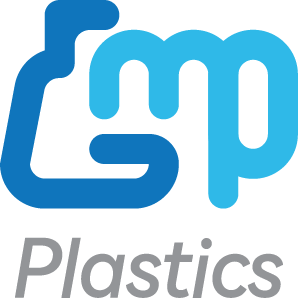Pasteur pipettes, also known as dropper pipettes, are indispensable tools in laboratories worldwide. These simple devices allow scientists and technicians to transfer small volumes of liquids with precision, making them essential in various experimental procedures. Proper usage of Pasteur pipettes is crucial to ensure accuracy and prevent cross-contamination. This article provides a comprehensive guide on how to use Pasteur pipettes effectively, discusses their applications, and offers tips for maintaining best practices in the laboratory.
Understanding Pasteur Pipettes
Pasteur pipettes are slender, elongated glass or plastic tubes tapered to a narrow point at one end and fitted with a rubber bulb at the other. They are primarily used to transfer small quantities of liquids, especially when precision is required but exact volume measurements are not critical. These pipettes are named after the renowned French scientist Louis Pasteur, who extensively used them in his experiments.
Types of Pasteur Pipettes
There are two main types of Pasteur pipettes:
-
Glass Pasteur Pipettes: These are reusable and can be sterilized through autoclaving. They are preferred when working with organic solvents or at high temperatures, as they are resistant to chemical reactions and heat.
-
Plastic Pasteur Pipettes: Typically made from polyethylene, these are disposable and used for aqueous solutions or when sterility is a concern. They are cost-effective and eliminate the need for cleaning and sterilization.
Proper Handling and Usage
To ensure accurate liquid transfer and maintain laboratory safety, follow these steps when using a Pasteur pipette:
-
Preparation:
- Select the appropriate type of pipette (glass or plastic) based on the chemical properties of the liquid to be transferred and the nature of the experiment.
- Ensure that the pipette and bulb are clean and free from any residual chemicals or contaminants.
-
Attaching the Bulb:
- Gently press the rubber bulb onto the wider end of the pipette, ensuring a snug fit to prevent air leakage. Avoid forcing the bulb too far onto the pipette, as this can cause breakage, especially with glass pipettes.
-
Aspirating Liquid:
- Hold the pipette vertically, with the bulb at the top and the tip pointing downward. This orientation prevents liquid from entering the bulb, which can cause contamination and inaccurate measurements.
- Squeeze the bulb to expel air before immersing the tip into the liquid.
- Submerge the tip slightly below the surface of the liquid to avoid drawing air into the pipette.
- Gradually release the pressure on the bulb to aspirate the desired volume of liquid into the pipette. Monitor the liquid level to ensure accuracy.
-
Dispensing Liquid:
- Move the pipette to the receiving container, maintaining the vertical orientation to prevent spills or contamination.
- Gently squeeze the bulb to dispense the liquid. To control the flow rate, adjust the pressure applied to the bulb.
- After dispensing, some liquid may remain in the tip due to surface tension; this is normal and should not be forcibly expelled, as it can lead to inaccuracies.
-
After Use:
- For glass pipettes: Rinse thoroughly with an appropriate solvent, followed by distilled water. Allow them to dry before sterilization or storage.
- For plastic pipettes: Dispose of them according to your laboratory's waste disposal protocols, especially if they have been in contact with hazardous substances.
Applications of Pasteur Pipettes
Pasteur pipettes are versatile tools used in various laboratory applications, including:
-
Transferring Liquids: Ideal for moving small volumes of liquids between containers without the need for precise measurement.
-
Layering Liquids: Useful in procedures requiring the careful layering of liquids of different densities, such as in density gradient centrifugation.
-
Spotting Samples: Employed to apply small amounts of reagents or samples onto surfaces, such as slides or thin-layer chromatography plates.
-
Seeding Cells: In cell culture, Pasteur pipettes can be used to distribute cells evenly across culture dishes or plates.
Best Practices and Tips
-
Avoid Contamination: Always use a clean pipette for each different liquid to prevent cross-contamination. For critical applications, consider using sterile, disposable pipettes.
-
Prevent Dripping: To minimize dripping, especially when working with volatile solvents, pre-wet the pipette by aspirating and dispensing the liquid several times before the actual transfer. This technique helps equilibrate the liquid's vapor pressure within the pipette.
-
Handle with Care: Glass pipettes are fragile and can break easily. Handle them gently and store them in appropriate containers to prevent damage.
-
Proper Disposal: Dispose of used pipettes, especially plastic ones, in designated waste containers. Follow your institution's guidelines for hazardous waste disposal when necessary.
-
Training and Practice: Ensure that all laboratory personnel are trained in the correct use of Pasteur pipettes. Regular practice can improve technique and accuracy.
Conclusion
Mastering the use of Pasteur pipettes is fundamental for anyone working in a laboratory setting. These simple yet versatile tools play a crucial role in various experimental procedures, from transferring liquids to seeding cells. By following proper techniques and best practices, you can ensure accuracy, maintain safety, and uphold the integrity of your experiments. Whether you're a seasoned researcher or a student new to the lab, understanding how to use Pasteur pipettes effectively is an essential skill in the world of science.




